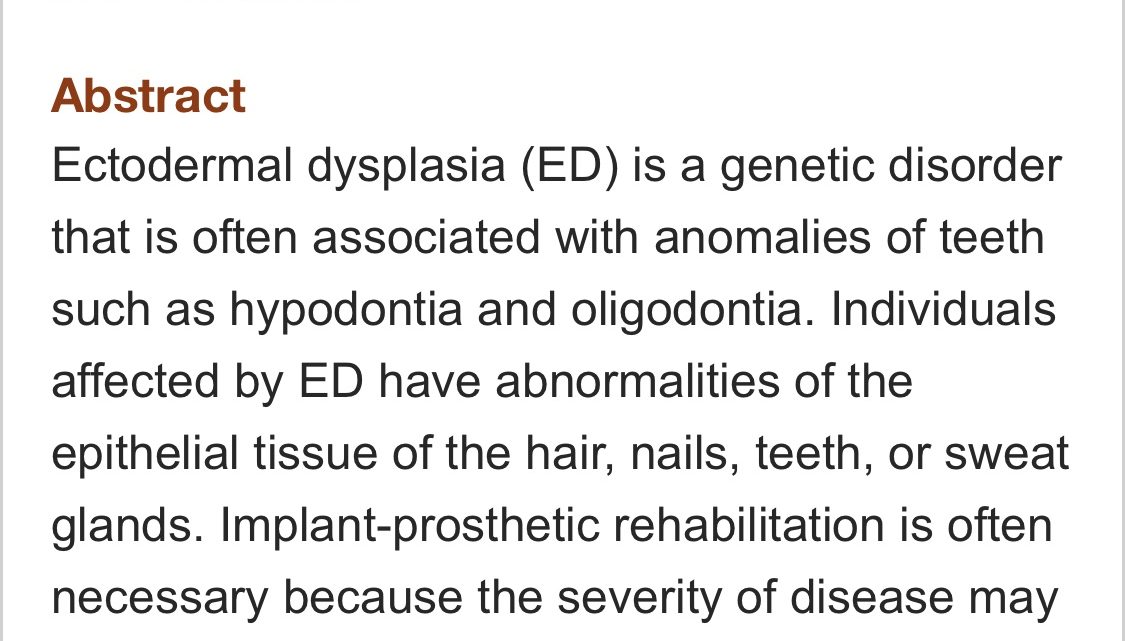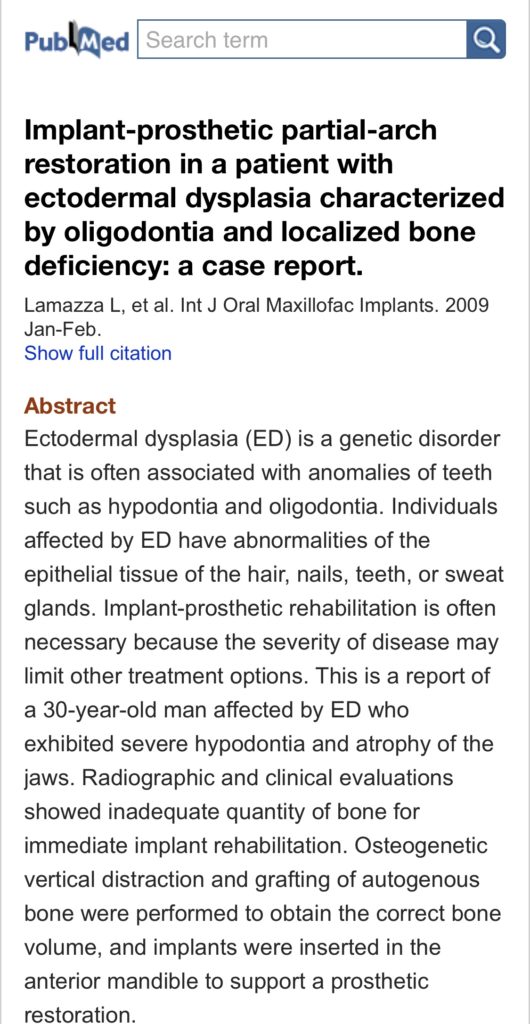
Implant-prosthetic partial-arch restoration in a patient with ectodermal dysplasia
Implant-prosthetic partial-arch restoration in a patient with ectodermal dysplasia characterized by oligodontia and localized bone deficiency: a case report. Lamazza L, Cerulli GM, Favaretti F, De Biase A. (Messina AM. in acknowledgements).
The International Journal of Oral and Maxillofacial Implants
Abstract
Ectodermal dysplasia (ED) is a genetic disorder that is often associated with anomalies of teeth such as hypodontia and oligodontia.
Individuals affected by ED have abnormalities of the epithelial tissue of the hair, nails, teeth, or sweat glands. Implant-prosthetic rehabilitation is often necessary because the severity of disease may limit other treatment options.
This is a report of a 30-year-old man affected by ED who exhibited severe hypodontia and atrophy of the jaws. Radiographic and clinical evaluations showed inadequate quantity of bone for immediate implant rehabilitation.
Osteogenetic vertical distraction and grafting of autogenous bone were performed to obtain the correct bone volume, and implants were inserted in the anterior mandible to support a prosthetic restoration.

